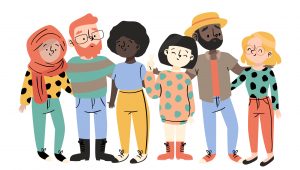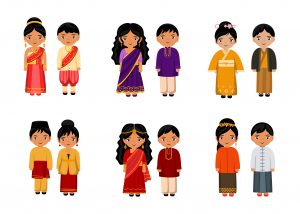
Singapore is well-known as one of the most racially harmonious countries in the world where we have people of different races living together.
Our everyday life is a melting pot of different cultures and ethnicities! In this article, we will be exploring how racial diversity can promote education for our children.
Efforts to promote racial diversity in Singapore

1. EIP and SPR Quota for HDB flats
The Ethnic Integration Policy (EIP) requires Housing & Development Board (HDB) resale flat buyers to adhere to racial quota so that there is a balanced mix of the various ethnic communities.
The Singapore Permanent Resident (SPR) quota is also a similar policy to ensure that SPR families can better integrate into the local community.
2. Strict laws against racial tension
Discrimination is unfortunately still very prevalent in our society and it can prevent equal chances for everyone. Therefore in Singapore, it is against the law to promote racial tension in any form.
Offenders can face imprisonment, a fine, or both.
How does racial diversity promote education?
Education does not only entail subject knowledge, but it also means having values, common knowledge, morals, respect for others, etc.
It is important that students are exposed to diversity in the classroom and learn about differences between one another. Unlike some countries, Singapore is not a homogenous country where everyone is of the same race.
When people are not exposed to different races or cultures, they tend to struggle with being open to new ideas and opinions. Knowledge can become limited to what we are exposed to from the mainstream media which tend to be very stereotypical.
The aim of racial diversity is to understand that every one of us is a multi-faceted individual with different beliefs, values as well as ambitions.
1. Get exposed to different perspectives

Every ethnic group has its unique culture and teachings, which allow us to grow up in different environments with different sets of values and perspectives.
Having different perspectives is actually important in group discussions and coming up with solutions to problems. If everyone has the same opinion, there wouldn’t not much room for improvement on ideas.
Plus, recent exams have moved towards real-life application where substantial knowledge about world issues is important. This is especially so for language and humanities papers.
Without a mature understanding of issues, students will struggle to relate to case studies and find it challenging to have intellectual discussions about the problems in our society.
2. Learn different cultures

It is important to understand that racial and cultural issues are sensitive topics that members of our society need to be careful about, knowing what not to say and do, etc.
Sometimes, a harmless gesture can be offensive to another ethnic group.
This is why it is important for students to be educated on the practices that different cultures have so that they can respect them.
One circumstance is the different festivities (Eg,. Chinese New Year, Deepavali, Hari Raya) celebrated in Singapore.
While there may be no rules set in stone for those of different ethnicities to observe the festival, there are always acts to show respect for other cultures out of courtesy.
Showing respect for other cultures involves being aware of why and when they may have certain practices.
Conclusion

We have seen how racial diversity is so important in promoting education. Allowing students to have frequent interactions with different groups from a young age will allow racial diversity to become second nature.
It is important to start from the education of the young, teaching them to be respectful and eradicate stereotypes and labels that may still linger around in our society.
Should Singapore be doing more in terms of our racial diversity? Let us know in the comments section.
